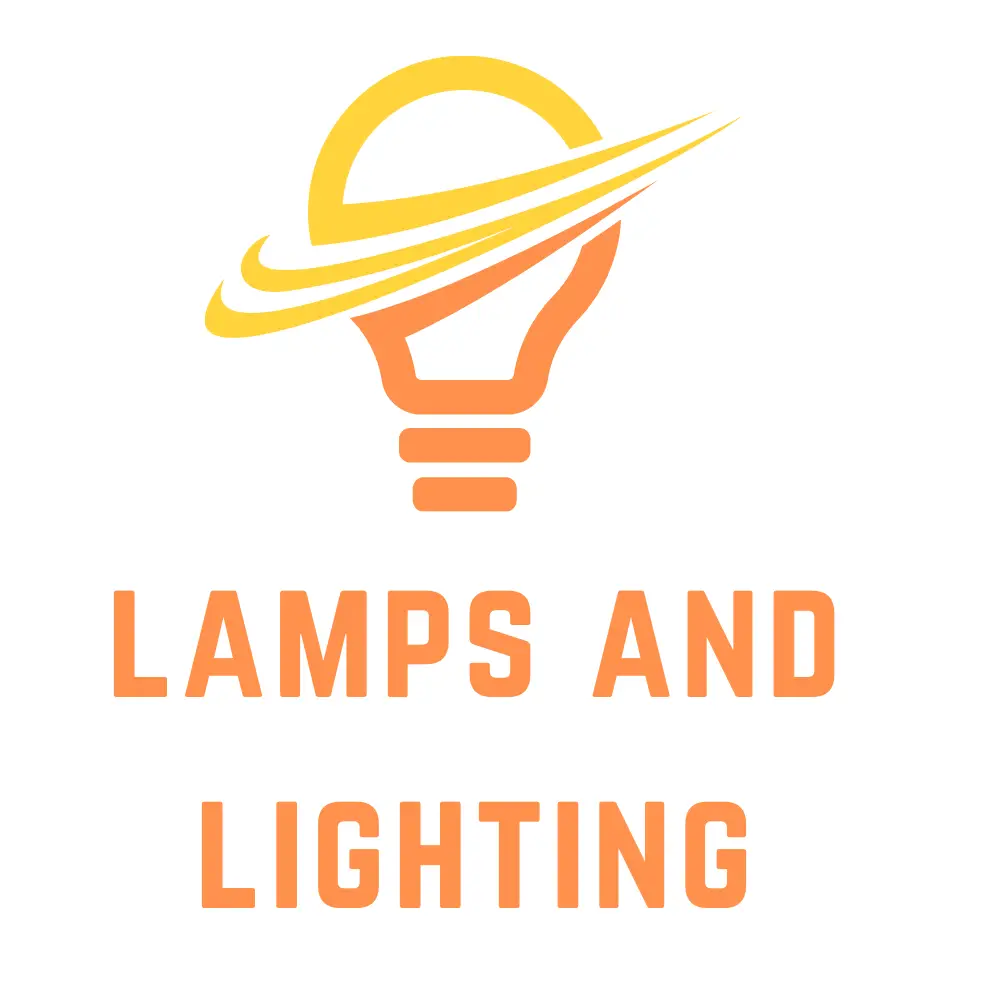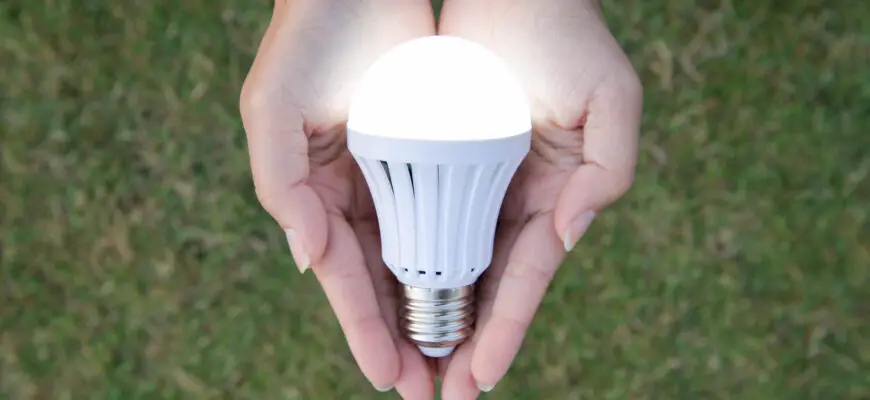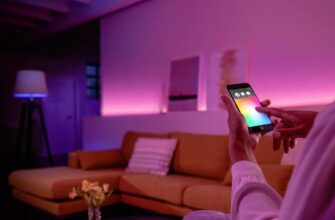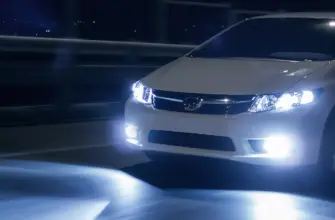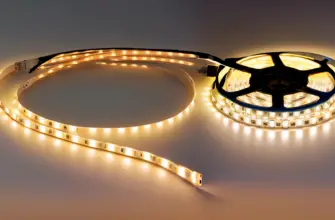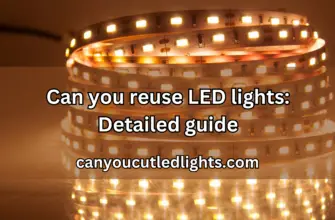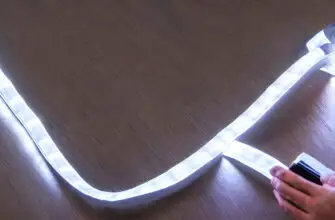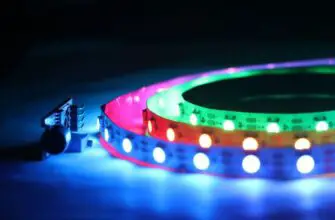Due to their energy efficiency, durability, and versatility, LED lights are becoming more and more used in home and business settings. But much like with every item of electrical equipment, safety issues frequently surface. Is it safe to cover LED lights? It’s one commonly asked issue. Is it preferable to cover them with a protective covering, or should you leave them unprotected?
So, is it safe to cover LED lights?
This blog post will go into the subject, examine the advantages and disadvantages, and give you the details you need to decide whether or not is it safe to cover LED lights.
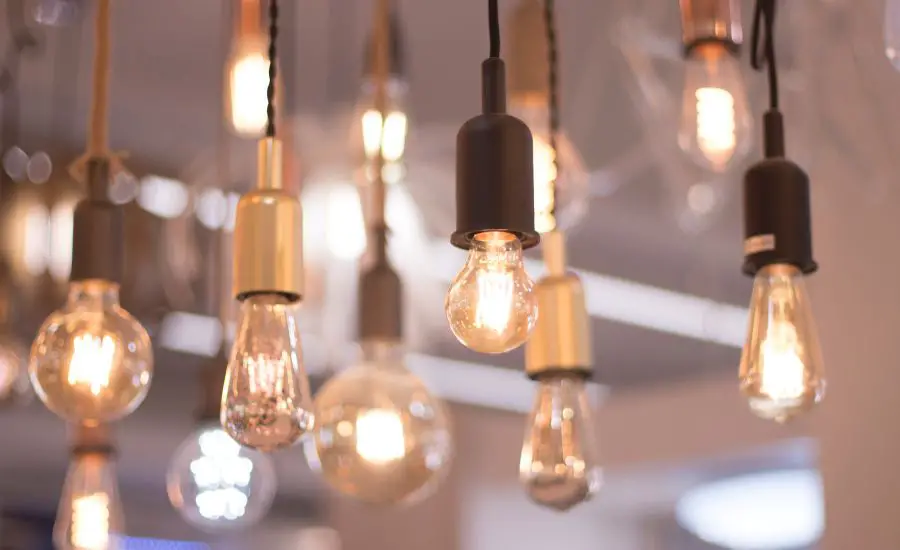
Overview of LED technology and its benefits
The innovative lighting technology known as LED, or Light-Emitting Diode, has become extremely popular in recent years.
Affordable LED lights, as opposed to conventional incandescent or fluorescent light bulbs, offer a number of benefits that make them highly appealing for both domestic and commercial lighting applications.
This is a great alternative if you’ve ever experienced hot incandescent bulbs causing a fire hazard because LED lights are likewise absolutely cool.
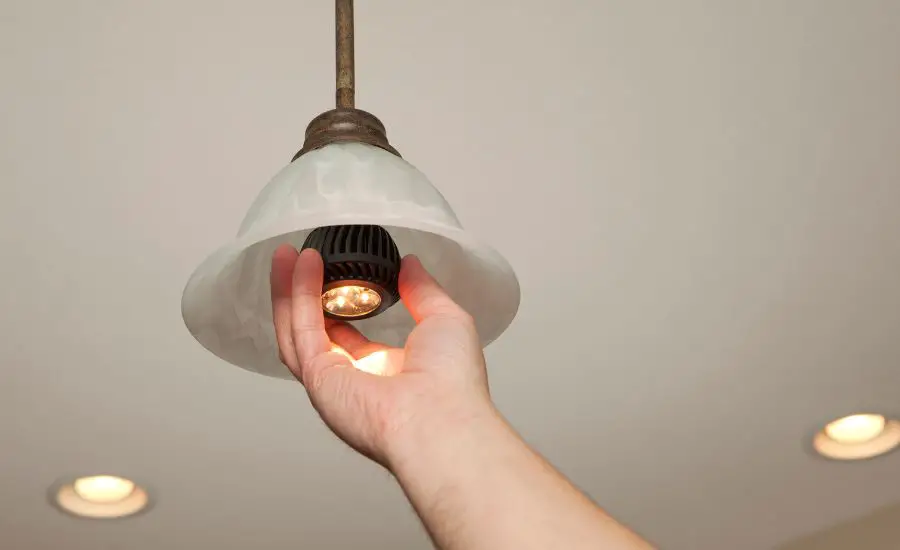
Explanation of how LED lights generate and emit light
LED lights operate on the principle of electroluminescence. When an electric current passes through a semiconductor material within the LED bulb, it excites the electrons within the material, causing them to release energy in the form of photons, or light particles.
LED lights vs traditional lights
LED lights possess several distinctive characteristics that set them apart from traditional light sources.
Longevity
An LED light bulb has an exceptionally long lifespan, typically lasting tens of thousands of hours. This longevity surpasses traditional bulbs by a significant margin, reducing the frequency of replacements and maintenance.
Instantaneous illumination
Unlike some other types of lighting, LED bulbs illuminate instantly without any warm-up time. This instantaneous illumination makes them ideal for applications where immediate lighting is required.
Compact size and design flexibility
LED lights are compact in size and available in various form factors, enabling versatile and creative lighting designs. They can be incorporated into thin strips, bulbs, panels, or even integrated into architectural structures.
Durability
LEDs are highly durable and resistant to shock, vibration, and external impacts. Their solid-state construction makes them less prone to damage from rough handling or accidental drops.

Reasons to consider covering LED lights
Covering LED lights can offer various benefits that go beyond mere protection. Let’s explore three compelling reasons why you might consider covering your LED lights.
Protection against physical damage and dust accumulation
One primary reason to cover LED lights is to provide them with an additional layer of protection against physical damage and dust accumulation. LED lights are delicate electronic devices that can be vulnerable to impact or accidental contact.
This is especially important in environments where the lights are exposed to elements like moisture, debris, or accidental knocks.
Furthermore, if you cover LED lights, it can prevent dust and dirt from settling on their surfaces, helping to maintain their optimal performance and extend their lifespan.
Enhancement of aesthetics and customization options
To improve the aesthetics of your lighting arrangement, such as the background lighting, covering LED lights can be a creative solution.
If you install LED strips, bulbs, or fixtures, the proper coverage option can give your room a touch of elegance and sophistication. You can add many colors, patterns, and even weather effects to your smartphone or tablet with only elementary computer skills by simply pressing a button.
With covers, you may alter the appearance of your LED lights to suit your design preferences because they are available in a variety of materials, finishes, and colors. Additionally, covers can aid in light diffusion and create softer light.
The LED lights can also be used as ambient lighting.
Ambient lighting affects a space’s general atmosphere and ambiance. It offers a gentle, steady light that eases eye strain and creates a welcoming atmosphere for unwinding and socializing.
Popular options for ambient lighting include floor lamps, wall sconces, and ceiling-mounted fixtures.
Dimmers and warm-colored lighting give adaptability.
You may create warm ambient lighting that improves both usefulness and beauty by carefully choosing the light fixture and considering the room’s size and needs.
Furthermore, if you want ambient lighting for added ambiance, you don’t necessarily need to rely on the main overhead light.

Reduced glare and light diffusion for better lighting effects
Reduced glare and improved light diffusion are two additional benefits when you cover LED lights. Some LED lights can emit extreme blue light brightness that may be uncomfortable or strain the eyes, especially those with high light output or concentrated light beams.
Since every LED bulb in a room generates the same light, you won’t have to worry about glaring lights again by covering the lights with diffusing materials or lenses. This results in more pleasant, eye-friendly, and evenly distributed light.
If you don’t have electrical tape, you can cover it with duct tape. Then, use a black permanent marker to prevent the light from shining brightly.
Potential risks and concerns
While covering LED lights can offer benefits, it is important to be aware of the potential risks and concerns associated with this practice, such as electrical shock LED lights and a short circuit.
Heat dissipation and thermal management issues
One of the primary concerns with covering LED lights is the potential impact on heat dissipation and thermal management. LEDs generate heat as a byproduct of their operation, and it is crucial for this heat to dissipate effectively to maintain optimal performance and longevity.
When LED lights are covered, the heat they produce can get trapped, leading to increased temperatures.

Impact on LED performance and lifespan
Covering LED lights may also have an impact on their overall performance and lifespan. LEDs are designed to operate within specific temperature ranges, and excessive heat buildup can cause their efficiency to decline.
It is essential to consider the compatibility of the cover materials with the specific LED lights, such as UV light, being used and ensure that they do not cause excessive heat retention or compromise the LED bulb’s performance and longevity.
Poor ventilation and excessive heat buildup
Poor ventilation and excessive heat buildup caused by covering an LED bulb can pose safety hazards.
High temperatures can not only affect the performance of the LED strip lights but also increase the risk of fire or electrical hazards.
If the heat generated by the LED light strips is not properly dissipated and ventilated, it can lead to the deterioration of insulation materials, melting of surrounding components, or even electrical shorts.
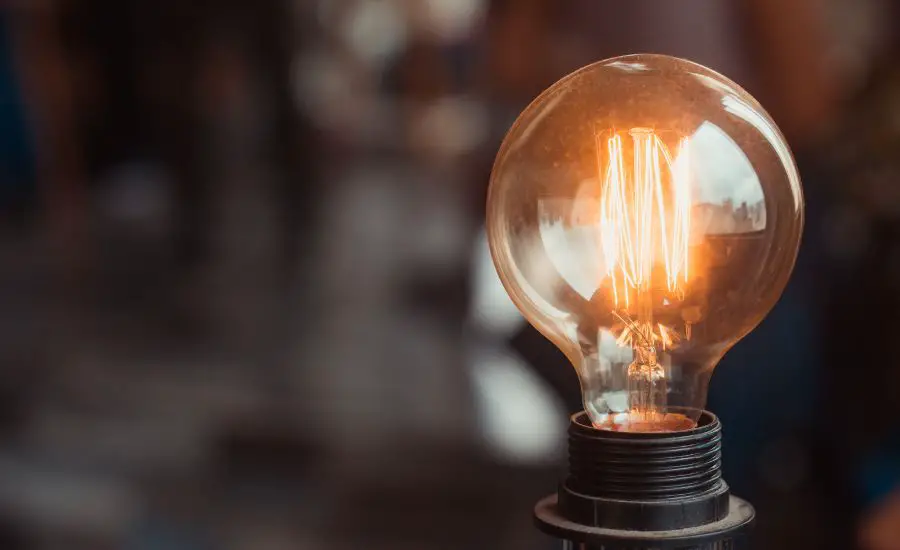
Factors to consider for safe LED light covering
When it comes to covering LED lights, ensuring safety should be a top priority. To make informed decisions and minimize potential risks, such as a short circuit, consider the following factors for safe LED light covering.
Quality and compatibility of the cover materials
The choice of cover materials is crucial for maintaining the safety and performance of covered LED lights.
Opt for high-quality covers that are designed specifically for LED lights and are compatible with the type and model of LEDs you are using.
Adequate heat dissipation measures and ventilation systems
To ensure safe LED light covering, it is essential to incorporate adequate heat dissipation measures and ventilation systems.
Consider covers that are designed to allow heat to escape and encourage proper airflow around the LED components. This can be achieved through the use of perforated covers, heat sinks, or ventilation slots.
It is crucial to remember that the cover decreases light and could not be successful in producing the desired outcomes.

Conclusion
So, is it safe to cover LED lights? In most cases, yes, but it’s important to prioritize safety and make informed decisions.
Recap the key points discussed, including the benefits of covering LED lights and the potential risks, such as heat dissipation, short circuit, and fire hazards.
We hope we’ve answered your question, “Is it safe to cover LED lights?”. We should also emphasize the need to consider factors like cover material quality, heat dissipation measures, and compliance with manufacturer guidelines.
FAQ
Can LED lights be covered?
Yes, most LED lights can be covered, but it’s important to consider safety and follow proper guidelines.
Is it safe to put duct tape over LED lights?
Using duct tape directly on LED lights is not recommended, as it can cause heat buildup and compromise safety. Use approved covers instead, such as electrical tape.
Is it safe to cover LED lights with paper?
It’s not safe to cover LED with paper, as it can pose a fire hazard due to the heat generated by a light bulb. Use fire-resistant materials designed for LED lights.
What is the best way to cover LED lights?
The best way to cover LED lights is by using approved covers or diffusers specifically designed for LED lighting. Ensure proper ventilation and heat dissipation for safe operation.
